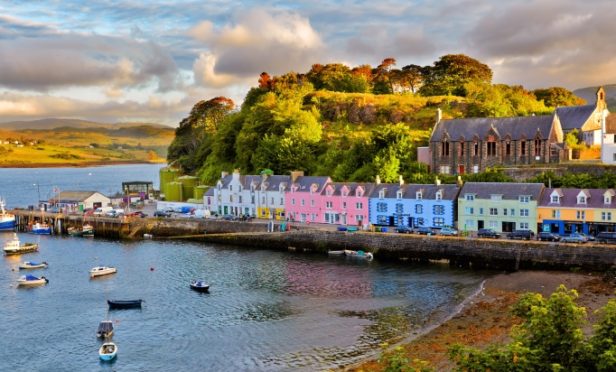A year-long economic impact study into the tourism and travel industry of Skye has found that visitors to the Misty Isle boosted the local economy by £211 million.
The research study, commissioned by SkyeConnect, the islands destination management organisation, was undertaken by Glasgow Caledonian Univesity’s Moffat Centre.
The findings have been revealed as it is estimated that the Scottish visitor market has been decimated by up to 50% for 2020 due to the lockdown.
The study has found that in 2019, Skye and Raasay attracted 650,000 visitors which in turn supported 2,850 full-time equivalent jobs.
On average visitors stayed for just over three days with the average expenditure standing at £324 per person, delivering the £211 million boost.
The study, undertaken alongside a visitor survey, also discovered that the major international visitor markets last year were those hailing from the United States, Germany, France and Australia, with only 7% of visitors classed as day-trippers.
The total value of all tourism goods and services produced is estimated by the Moffat Centre to equate to £260 million of economic output, with the gross value added (GVA), the measure of the value of goods and services produced in an area, standing at £140 million for the island.
Professor John Lennon, lead author of the report and Moffat Centre director, said: “This is an important report for Skye as the Scottish tourism industry begins a slow recovery from the Covid-19 impacts, which have decimated trade for more than 50% of the 2020 tourist season.
“Skye is highly vulnerable to the downturn in international visitors that will continue for much of 2020 and beyond.
“Restrictions on access and reduction in air connectivity will impact on visitation.
“The island does benefit from direct road access which will hopefully help catalyse greater domestic visitation – which is likely to characterise visitation for the remainder of the year.”
SkyeConnect has said work is still to be done to encourage greener travel as the study found 65% of visitors arrived on Skye by car.
Coinciding with the attraction of large visitor numbers, studies have has also found a dramatic increase in online searches for the words Isle of Skye, up 270% between 2015 and 2019.
Footfall in the island’s capital of Portree has also risen by 79% since 2010.
Visitors to the Misty Isle returned positive reviews on their satisfaction with accommodation, food and visitor attractions on the island, however also identified road conditions, lack of public toilets and environmental erosion as key concerns, backed by a separate survey conducted with the aid of island residents.
Marina Martinolli, research project manager at the Moffat Centre, who carried out the survey analysis, said: “The extensive research undertaken with visitors, tourism businesses, key stakeholders and residents offers a unique insight into the impacts of tourism of Skye.
“Overwhelmingly the responses from visitors were positive, whilst local businesses and residents were mindful of the environmental impacts of the increase in visitors.”
SkyeConnect has said the results of the survey and economic impact assessment will now be digested and used to consider the organisation’s strategy for years to come.
Project manager Alistair Danter welcomed the findings as Skye begins to welcome visitors after emerging from lockdown.
He said: “The Moffat Report demonstrates the value and importance of tourism to Skye.
“We know we will take a long-time to recover from the Covid-19 lockdown but as we emerge from the darkest period in our industry’s history, we know the potential of tourism in Skye.
“We must take this data and use it lobby for the infrastructure investment Skye so desperately needs.
“There are also other challenges to address such as the environmental impact of 65% of visitors arriving on Skye by car. Also, it is clear that the local economy is ‘leaking’ money through the fees paid by accommodation providers to online travel agents.
“We need to reset and reshape tourism for the new world and encourage a more sustainable approach that provides visitors with an immersive experience while ensuring that the island and its communities see the benefits of a tourism economy.”
